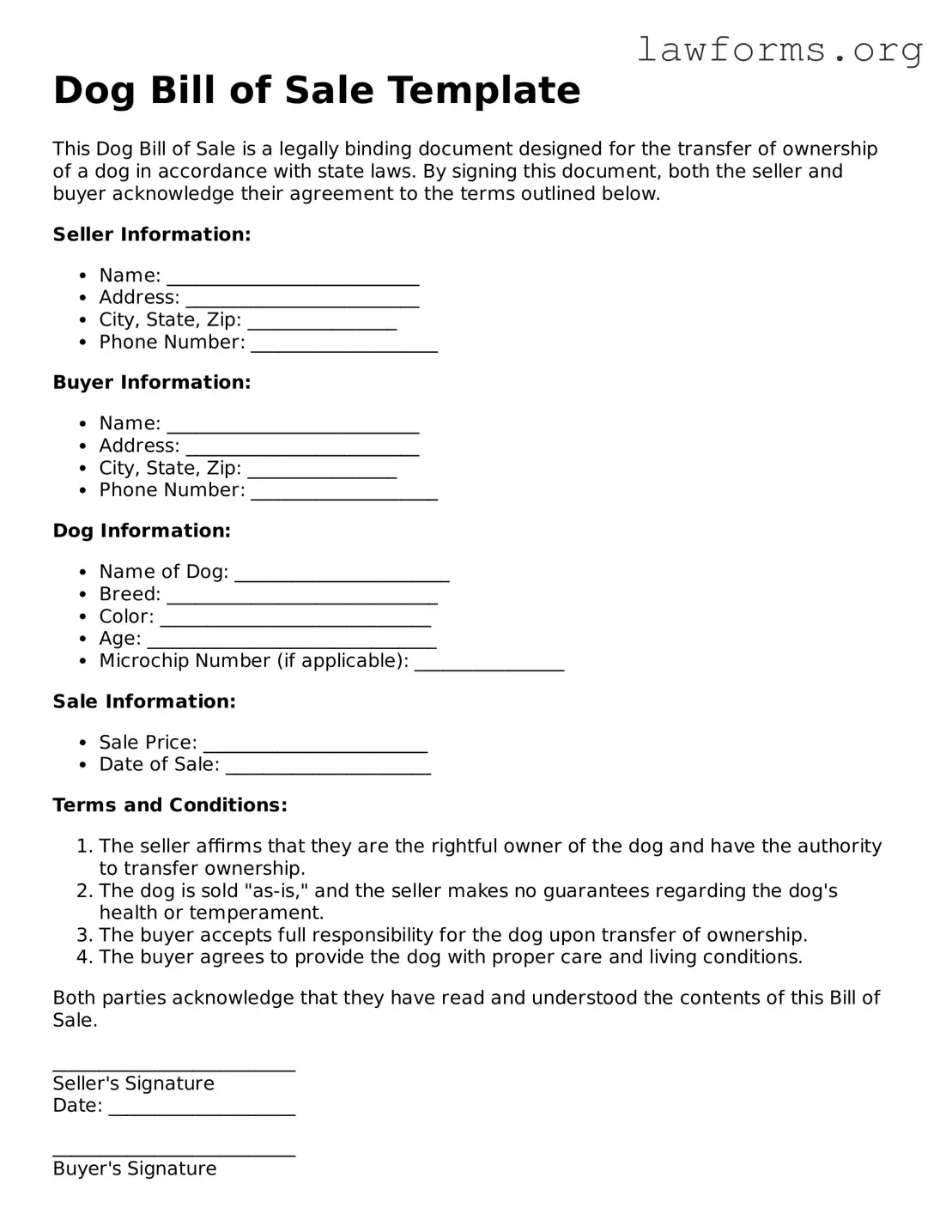Dog Bill of Sale Template
This Dog Bill of Sale is a legally binding document designed for the transfer of ownership of a dog in accordance with state laws. By signing this document, both the seller and buyer acknowledge their agreement to the terms outlined below.
Seller Information:
- Name: ___________________________
- Address: _________________________
- City, State, Zip: ________________
- Phone Number: ____________________
Buyer Information:
- Name: ___________________________
- Address: _________________________
- City, State, Zip: ________________
- Phone Number: ____________________
Dog Information:
- Name of Dog: _______________________
- Breed: _____________________________
- Color: _____________________________
- Age: _______________________________
- Microchip Number (if applicable): ________________
Sale Information:
- Sale Price: ________________________
- Date of Sale: ______________________
Terms and Conditions:
- The seller affirms that they are the rightful owner of the dog and have the authority to transfer ownership.
- The dog is sold "as-is," and the seller makes no guarantees regarding the dog's health or temperament.
- The buyer accepts full responsibility for the dog upon transfer of ownership.
- The buyer agrees to provide the dog with proper care and living conditions.
Both parties acknowledge that they have read and understood the contents of this Bill of Sale.
__________________________
Seller's Signature
Date: ____________________
__________________________
Buyer's Signature
Date: ____________________
This document serves as proof of sale and should be retained by both the seller and the buyer for future reference.
